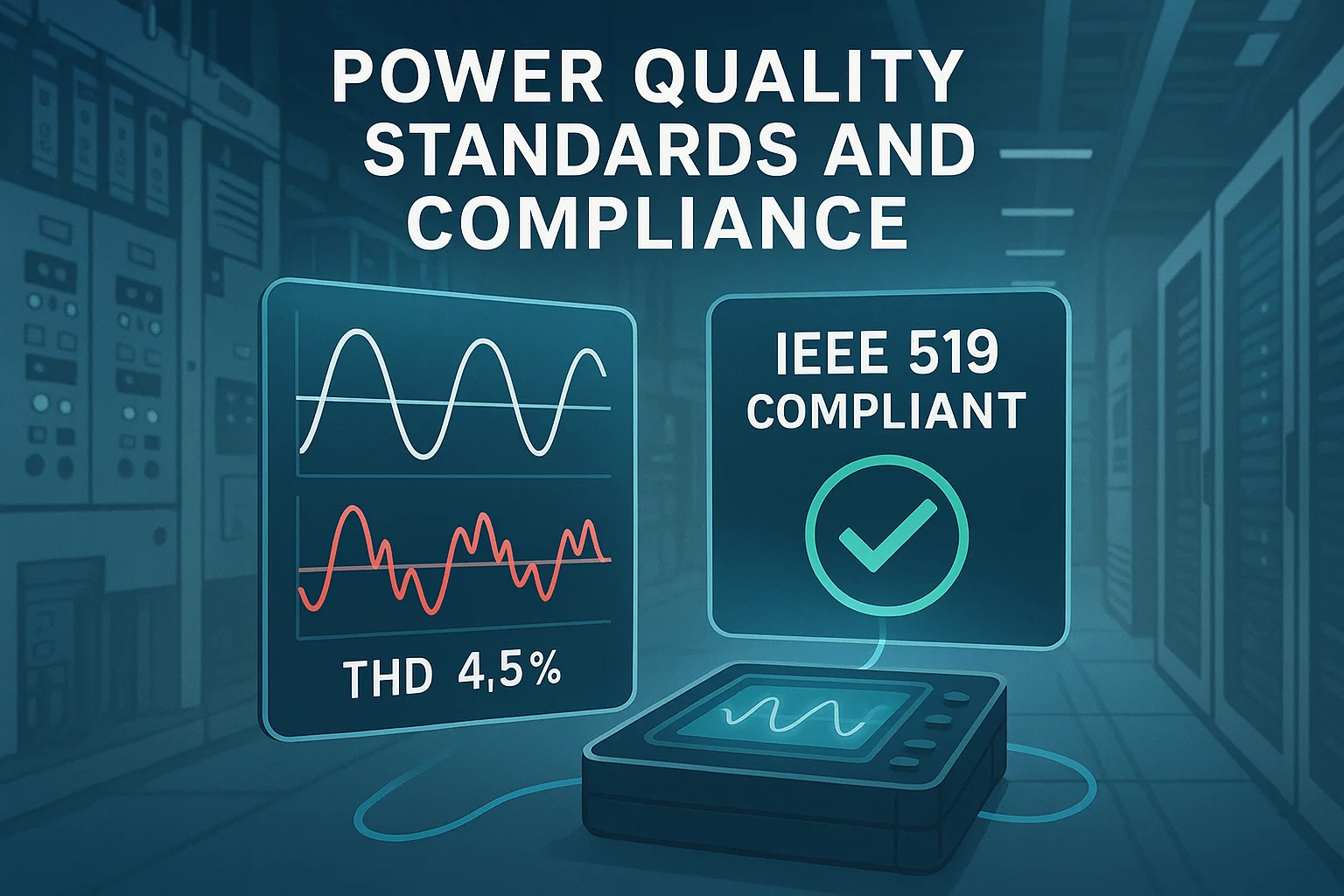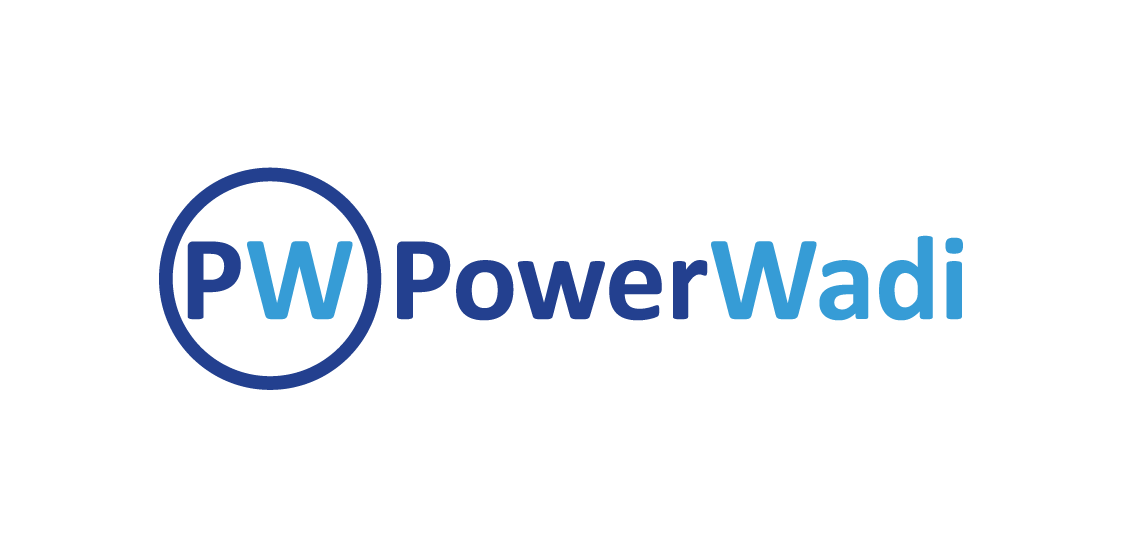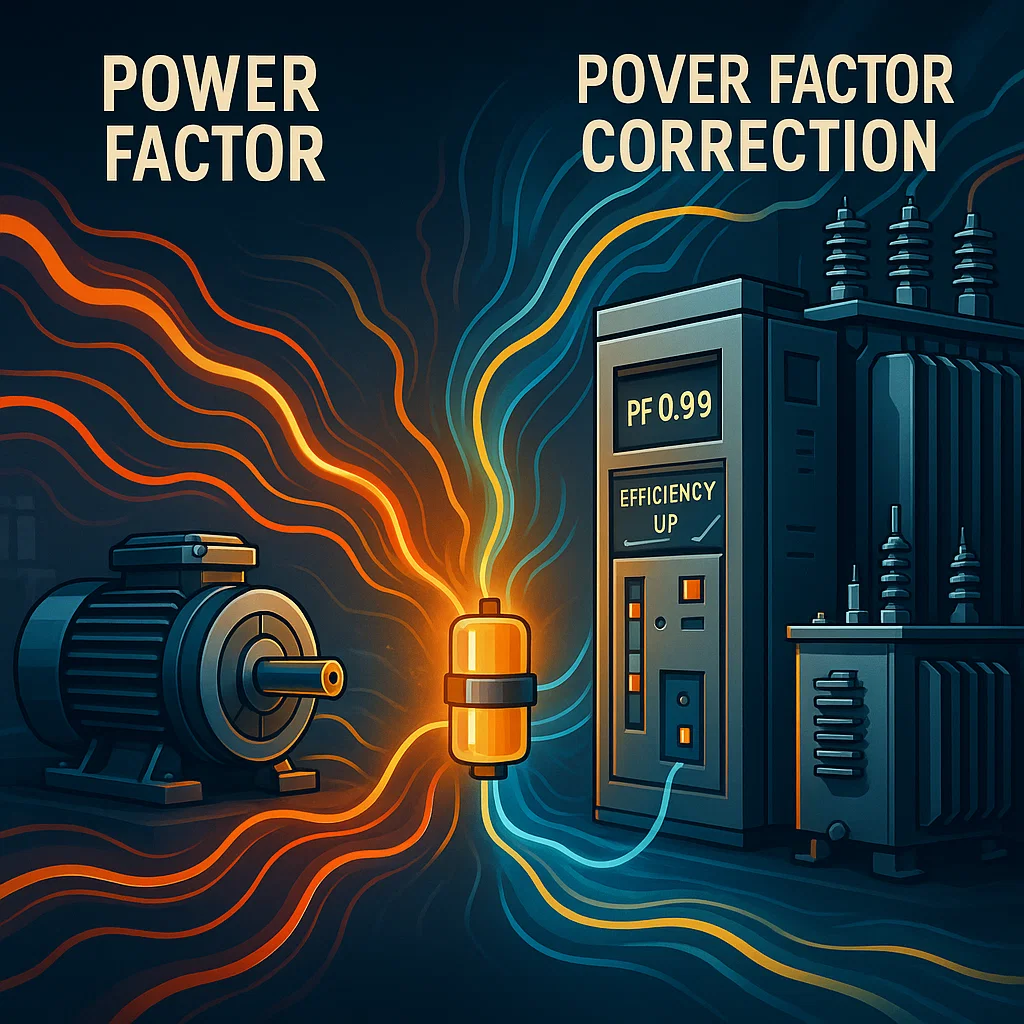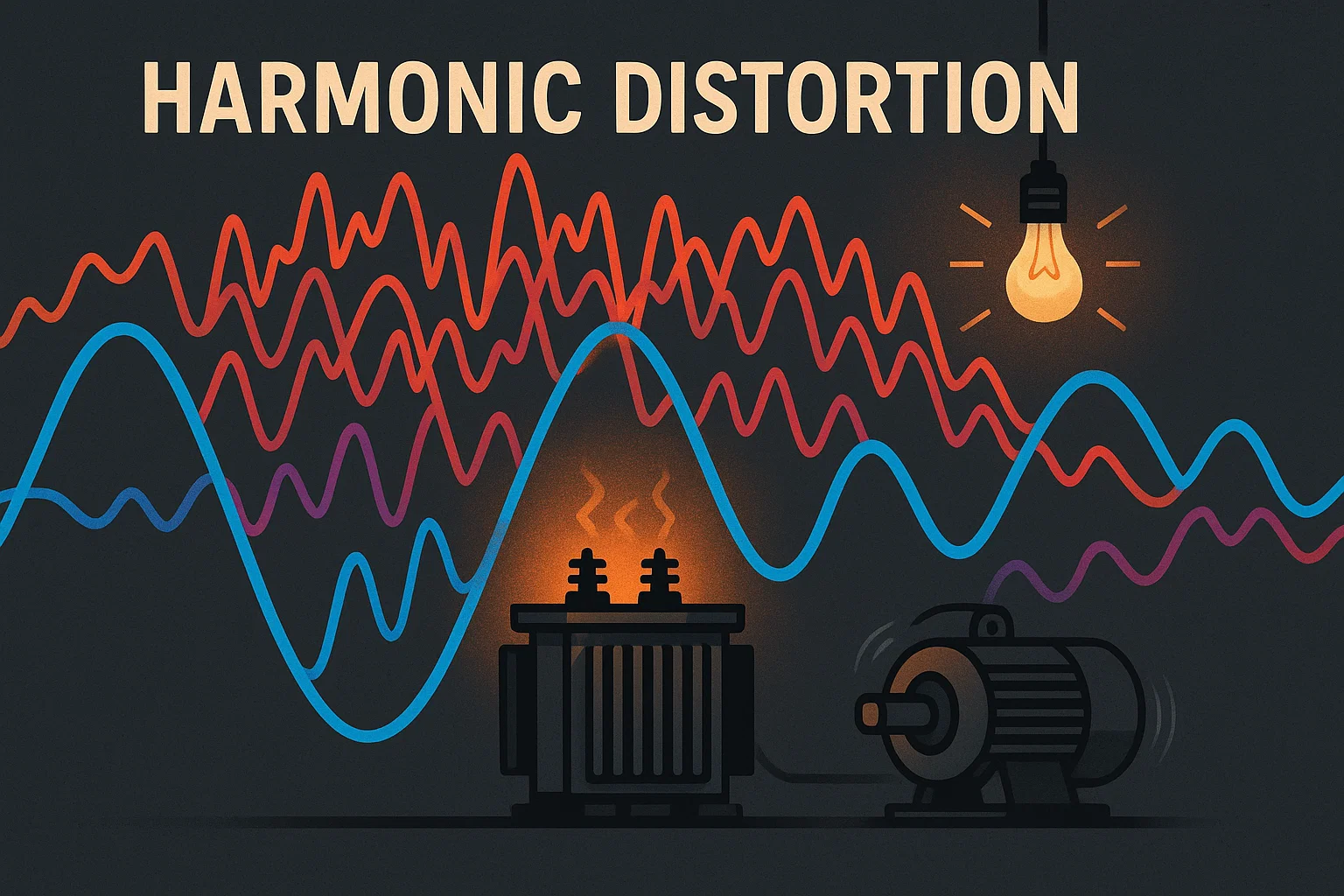Power Quality Standards and Compliance: Navigating the Industrial Landscape
Navigate the complex world of power quality standards, including IEEE 519, IEC 61000, and other international requirements, to ensure operational reliability and avoid penalties in industrial facilities.

In today's electrically intensive industrial and commercial environments, ensuring optimal power quality isn't just about efficiency; it's about reliability, equipment longevity, and avoiding costly penalties. Adhering to established power quality (PQ) standards and compliance requirements is fundamental to achieving these goals. This article will help you navigate the key international standards that govern power quality.
Key Power Quality Standards Overview
Different standards address various aspects of power quality, from harmonic distortion to electromagnetic compatibility. Here are some of the most critical ones:
-
IEEE 519: IEEE Recommended Practice and Requirements for Harmonic Control in Electric Power Systems
This is perhaps the most widely recognized standard for harmonic distortion. IEEE 519 sets limits for both voltage and current distortion at the Point of Common Coupling (PCC) – the interface between the utility and the customer. It aims to protect the utility grid from excessive harmonics generated by customer loads and to ensure a healthy voltage waveform for all connected loads. Compliance typically involves keeping Total Harmonic Distortion (THD) within specified percentages, which vary based on voltage level and short-circuit current ratio.
-
IEC 61000 Series: Electromagnetic Compatibility (EMC)
This broad international series covers various aspects of electromagnetic compatibility, which includes power quality. It's broken down into several parts, including:
- IEC 61000-3-2/12: Limits for harmonic current emissions from equipment.
- IEC 61000-4 series: Testing and measurement techniques for immunity to various disturbances (e.g., IEC 61000-4-30 for power quality measurement methods, IEC 61000-4-15 for flicker).
- IEC 61000-2 series: Describes the electromagnetic environment.
The IEC 61000 series is crucial for ensuring that equipment operates correctly in its electromagnetic environment without causing or being susceptible to interference.
-
EN/IEC 62040 Series: Uninterruptible Power Systems (UPS)
This standard specifically addresses the performance and safety requirements for Uninterruptible Power Systems (UPS). It defines performance classifications for UPS units based on their output voltage waveform, transfer time, and power conditioning capabilities (e.g., "VFI" for Voltage and Frequency Independent, typical of online UPS). Compliance with EN/IEC 62040 ensures that a UPS provides reliable, safe, and specified power protection.
-
Other Relevant Standards:
- IEEE 1100 (Emerald Book): Recommended practice for powering and grounding sensitive electronic equipment.
- IEEE 1159: Recommended practice for monitoring power quality.
- EN 50160: Voltage characteristics of electricity supplied by public distribution networks.
The Power Quality Compliance Roadmap
Achieving and maintaining power quality compliance is an iterative process, not a one-time fix. A typical roadmap includes:
-
Baseline Measurement and Assessment:
Utilize power quality analyzers to capture real-time data on key parameters such as voltage sags/swells, transients, flicker, and most importantly, Total Harmonic Distortion (THD) for both voltage and current. This establishes a clear picture of your facility's current power quality state.
-
Gap Analysis Against Relevant Limits:
Compare your baseline measurements against the limits set by applicable standards (e.g., IEEE 519 at your PCC). Identify where your system deviates from compliance and quantify the extent of the problem.
-
Mitigation Plan Development:
Based on the gap analysis, develop a targeted plan using appropriate power quality solutions. This could involve installing active or passive harmonic filters, power factor correction (PFC) capacitor banks, K-rated transformers, or upgrading specific equipment.
-
Implementation and Verification Testing:
Install the chosen mitigation equipment. Follow up with post-installation power quality measurements to verify that the implemented solutions have brought your facility into compliance and resolved the identified issues. Comprehensive documentation of all steps is critical.
-
Continuous Monitoring and Periodic Review:
Power quality can change as loads are added or modified. Continuous monitoring systems and periodic re-audits are essential to ensure ongoing compliance and identify new power quality challenges before they become critical.
💡 Key Takeaway: Proactive power quality compliance is a strategic investment. It not only helps avoid utility penalties and regulatory fines but significantly improves the reliability and efficiency of your electrical infrastructure, extends equipment lifespan, and protects sensitive operations. Treat it as an ongoing process, not a one-off task, with regular monitoring and adjustments.


